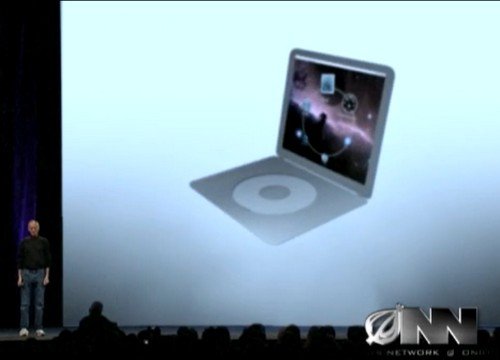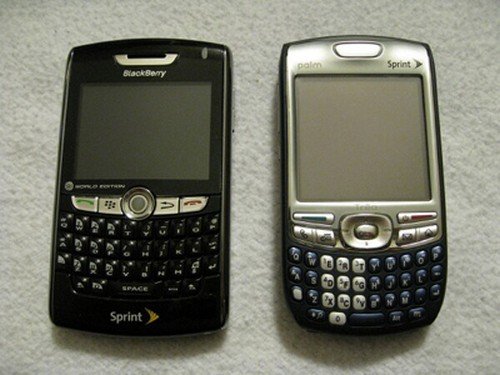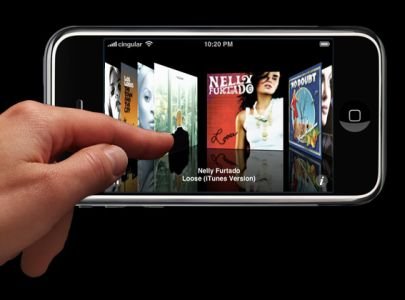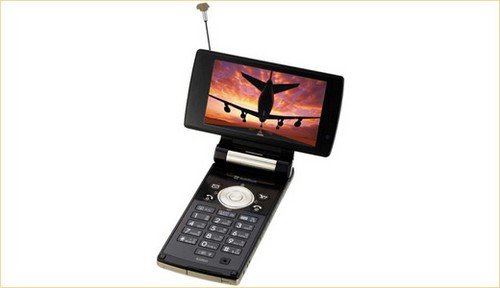|
||||||
|
We apologize for the hiatus on posts, but we’ve been running into a few technical difficulties. Needless to say, we’re hopefully back in full force, with another analytical post! In State of the Industry we take a step back from the typical archaic product cycles of the mobile industry and focus our attention on one particular aspect of the industry. In this episode, we target the media aspect. Pictures, music, videos, movies, the whole shebang. We discuss the entertainment focus versus the enterprise focus, and we discuss consumer needs versus the technical limitations. We discuss what to look for in the future, and we discuss it in style. More mindful media madness momentarily. Previous State of Media Media has become an essential (and obvious) part of the handset market. It is becoming rare that a cellphone doesn’t have some sort of music playback functionality, and even more rare to come without a camera. Back in the day, cellphones were split between a barebones phone, media-centric phones, and enterprise phones. BlackBerry devices came out with specific lines (i.e. 8800) to address the sans-camera enterprise market. Heck, back then, it was scary if someone walked into a bathroom with a cellphone equipped with a camera.
[Image Courtesy: CrackBerry] During those times, the differences between functionality from handset maker to handset maker was quite drastic. RIM held onto its enterprise market with the fastest, most secure, and most reliable e-mail service. Palm fought back with its strengths in 3rd-party applications. HTC and Windows Mobile tried to bring “mobile computing” in the truest sense of the word, to the smartphone industry. In the midst of the enterprise battles, came Motorola, Sony Ericsson, LG and Samsung, battling on the low-end and music forefront. And with a cellphone for nearly every demographic, Nokia came out with guns and cannons blazing. Current State of Media With a sigh of annoyance, the overused and unfortunate word “convergence” comes into play. The Engineers reading this have probably skipped to the more technical sections by now, but it must be stated. The North American market (for the most part) has converged to handling everything without a sweat. In fact, the arguments of yesteryear about music playback versus e-mail, have turned into virtual keyboard versus physical keyboard versus hybrid attempts. As such, functionality arguments have turned into a focus on usability and enhancing the user-experience. With statistics like these, it’s difficult to argue that this is the case.
With media being integrated and assumed, the spotlight turns to implementation. It’s arguable, with iTunes being so well integrated and a history of industry-changing music players, that the iPhone presents itself as one of the best phones for music and general media capabilities. RIM with no less of a media player, also recently announced its intentions to play in the music space. HTC/T-Mobile/Google ventured in with Amazon MP3 integration, and it can only be assumed that Palm has something up its sleeves. With contenders like these, it’s no wonder the PMP market has really died. Luckily for us gadget freaks, companies like Cowon continue to impress with amazing audio-centric players like the S9. Of course, music represents only a portion of the media umbrella. Video playback is a whole different ball game. Technical challenges arise such as codec and format support, processor and RAM resource use, ability to push more pixels, and network and handshaking challenges for streaming video. Of course, the computing power required for graphical-intensive applications is starting to become available with platforms such as NVIDIA’s Tegra platform and Qualcomm’s possible-vaporware, Snapdragon. Traditionally, many of the companies, such as RIM, have opted for single processors solutions, but its possible that this is no longer working. With many of the core functions like GPS, audio, and graphical support being integrated into single processor solutions, these do-it-all processors could struggle depending on how capable the devices need to be at multi-tasking. Perhaps video computing still requires a discrete solutions, such as is currently the case with higher-end laptops. Companies like Apple have opted for graphical accelerators from Imagination Technologies, while other devices like Nokia’s N-Series and the upcoming Palm Pre use Texas Instrument’s OMAP platform. Playing video is just one of the current problems. Storage has always lent itself to problems. If high-definition videos come into play, say, with Tegra’s platform, it’s very possible that a traditional microSD card or internal storage will pose limitations. Transferring high-density files like these are another problem. Currently, sideloading and syncing with phones are quite slow (with the exception of most BlackBerry devices). Solutions are available, such as Cypress’s USB controllers, but perhaps companies need to take a stab at USB 3.0 integration in the near future. Assuming there are controllers and memory types to handle the bandwidth, with USB 3.0, it’s possible that transferring files will not pose a problem for another decade — but these companies really need to get on that.
Finally, the last aspect, pictures. Pictures are really a bore to talk about, but what is interesting is the camera integration in handsets. LG, Samsung, and Sony Ericsson have really stepped up recently. Phones like the Samsung Pixon, LG’s many 8MP entries, and even Sony Ericsson’s Cyber-shots, now have face-detection technology, image stabilization, and some pretty impressive functions. However, one of the main hassles with cameraphones is its inefficiency. They’re slow to access, slow to snap, and a hassle to view. Night shots are grainy, continuous shots are slow, and shooting video in HD is a whole other story. In essence, the hindrances here lie in processing power and lens technology. Phones with slimmer form factors don’t have the space for processors like Canon’s DIGIC III, let alone optical zooming capabilities. Integrated solutions are becoming the fad with manufacturers nowadays, so perhaps there is really no space for an amazing cameraphone. We do hope that they continue to search for a solution though. Important Side Notes North America is an awkward market, and we do believe it’s suffering because of its uniqueness. Europe and Japan love to integrate network-intensive features like DVB-Tuners, live TV, video conferencing, etc. Fortunately for the sake of carriers here, this isn’t the case. The geographical sparseness in the States, not to mention Canada, presents itself with the technical problem of putting up enough towers. Perhaps the 35% market share of the global music industry attests to what we North Americans look for.
Gaming is another industry that’s really booming, even in the midst of the economic conditions. Perhaps companies need to take another look at solutions like, well, a PSP Phone. One of the interesting stories is how touch sensing capabilities got hold of the gaming industry with consoles like the DS. This inherently, went to the advantage of Apple, as the iPhone now proves to be one of the strongest contenders for mobile gaming. Conclusion Handsets have really become a “console” for media entertainment. Akin to the DS and PSP of gaming consoles, what was previously left for the living room, has now been made available for users, wherever they are. Functionality and to a degree, usability, has already reached a plateau of “innovative use”. For now, the difference lies in implementation, content distribution (preferably DRM-less, although that’s a separate topic in and of itself), and the upcoming computing/processing battle for graphical power.
In fact, much of what is happening in the handset market, mimics the gaming market. The gaming industry went through a battle of controls, processing and graphical power, content distribution, and innovation. Perhaps in a different order, and perhaps with different companies, but hey, no model is perfect. |
||||||
|
Copyright © 2010 phoneWreck - All Rights Reserved |
||||||






